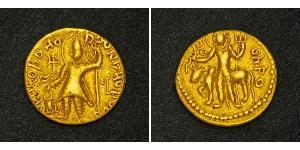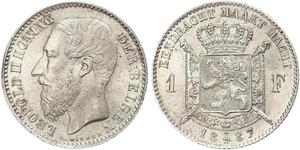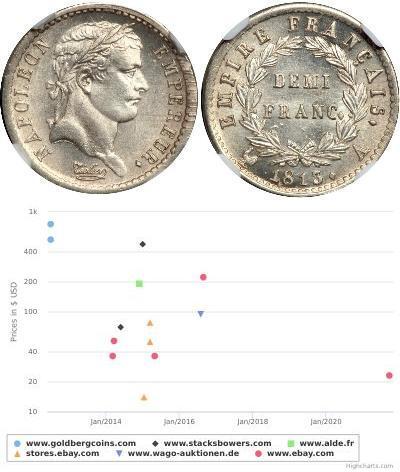[ 5366] SEX. POMPEIUS FOSTLUS, moneyer Silver Denarius (20mm, 3.85 gm.), Rome, 137 B.C. Rare. Reference: Pompeia 1; B.M.C. 927; Syd. 461a; Craw. 235/1c Helmeted head of Roma right, behind jug, X below. SEX . POM . FOSTLVS, she-wolf right, suckling the Twins, Romulus and Remus,behind ficus Ruminalis, shepherd Faustulus on left, ROMA in exergue. This family was of plebeian origin and it would appear that they claimed descent from Faustulus, the royal shepherd of Amulius, who found the twins suckled by the wolf at the foot of the Palatine, the cradle which they had been born down the Tiber having overturned under a fig-tree. Provided with certificate of authenticity. CERTIFIED AUTHENTIC by Sergey Nechayev, PhD - Numismatic Expert In traditional Roman religion, Roma was a female deity who personifed the city of Rome and more broadly, the Roman state. Her image appears on the base of the column of Antoninus Pius. Roma, formerly queen of almost the whole earth. Horace (L. iv. od. 3) calls her the prince of cities; and according to Martial (L. xii. epig. 8) she is terrarum dea gentiumque. In Roman mythology, Faustulus was the shepherd who found the infants Romulus and Remus, who were being suckled by a she-wolf, known as Lupa, on the Palatine Hill. He, with his wife, Acca Larentia, raised the children. In some versions of the myth, Larentia was a prostitute (known in Latin as lupae, or 'she-wolves'). The name Faustulus was later claimed by a Roman family, one of whom minted a coin showing Faustulus with the twins and she-wolf. Sextus Pompeius Fostlus issued a silver denarius in about 140 BCE that showed, on the reverse, the twins being suckled by a dangerous wolf with the shepherd Faustulus to their left. The Roman Republic was the phase of the ancient Roman civilization characterized by a republican form of government. It began with the overthrow of the Roman monarchy, c. 509 BC, and lasted over 450 years until its subversion, through a series of civil wars, into the Principate form of government and the Imperial period. The Roman Republic was governed by a complex constitution, which centered on the principles of a separation of powers and checks and balances. The evolution of the constitution was heavily influenced by the struggle between the aristocracy (the patricians), and other talented Romans who were not from famous families, the plebeians. Early in its history, the republic was controlled by an aristocracy of individuals who could trace their ancestry back to the early history of the kingdom. Over time, the laws that allowed these individuals to dominate the government were repealed, and the result was the emergence of a new aristocracy which depended on the structure of society, rather than the law, to maintain its dominance. During the first two centuries, the Republic saw its territory expand from central Italy to the entire Mediterranean world. In the next century, Rome grew to dominate North Africa, the Iberian Peninsula, Greece, and what is now southern France. During the last two centuries of the Roman Republic, it grew to dominate the rest of modern France, as well as much of the east. At this point, the republican political machinery was replaced with imperialism. The precise event which signaled the end of the Roman Republic and the transition into the Roman Empire is a matter of interpretation. Towards the end of the period a selection of Roman leaders came to so dominate the political arena that they exceeded the limitations of the Republic as a matter of course. Historians have variously proposed the appointment of Julius Caesar as perpetual dictator in 44 BC, the defeat of Mark Antony at the Battle of Actium in 31 BC, and the Roman Senate's grant of extraordinary powers to Octavian (Augustus) under the first settlement in 27 BC, as candidates for the defining pivotal event ending the Republic. Many of Rome's legal and legislative structures can still be observed throughout Europe and the r ...
type to read more

|
Posted by:
anonymous 2015-08-18 |
Similar Coin Groups
2025-05-27
- New coin is added to 1 Franc Belgium Silver Leopold II of Belgium(1835 - 1909)
1 Franc Belgium Silver Leopold II of Belgium(1835 - 1909)
group has 12 coins / 10 prices
⇑
Belgien, Königreich. Leopold II. 1865-1909. Franc 1887. Flämische Legende. K.M. 29.1. Vorzüglich - Stempelglanz
2025-05-25
- Historical Coin Prices
You may be interested in ...






















